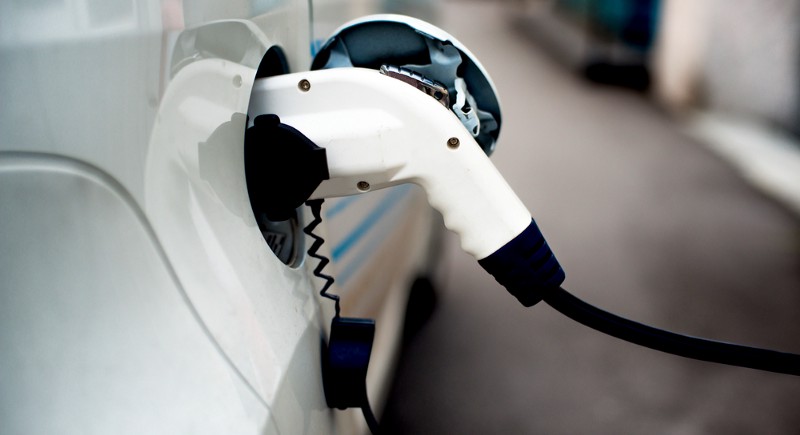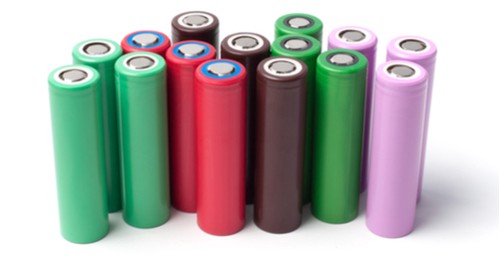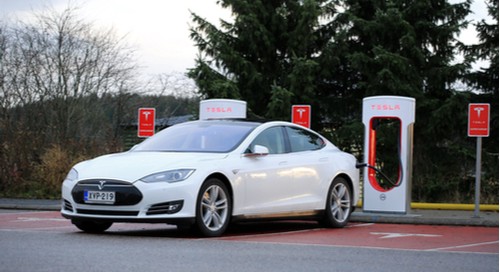PCB Design Software and Electronics Design News for PCB designers,
electronics engineers and makers of all kind, visit resources.altium.com and altium.com
Feb 2
How Tesla Rethought Lithium Ion Cells Through Modular Design and Vertical Integration

I learned a lot about lithium-ion (Li-ion) batteries when I was working for a smartphone company. With every phone redesign, we built a new battery pack from scratch. The phone gets thinner, so the battery must as well. Sure, that’s a time-consuming effort, but it’s the only way to get the best battery performance. In a perfect world, there would be a standard Li-ion battery that could work within all our phones. This sort of modular approach is more efficient and cost-effective, and easier to produce in-house. This is why Tesla has taken a modular approach doing for their electric vehicles (EV); they simplified production and battery recycling by using a single battery unit.

The 18650 lithium-ion cell. By combining thousands of these into one battery pack, Tesla created a standout power solution.
Li-Ion Batteries: Powering the Electric Vehicle of the Future
Tesla Motors, the standout EV maker, has created a winning strategy for developing battery solutions. This is a key issue for all EV manufacturers since batteries are the most expensive part of the vehicle. Older and cheaper battery technologies, like Nickel Metal Hydride, result in shorter range and longer recharge times. Unlike other car manufacturers, Tesla made the bold choice to take the Li-ion route early on. They have taken advantage of Li-ion’s potential through a modular battery design.This means that their cars exhibit gas engine-like performance, design flexibility and the fastest charge times available.
Guided by Elon Musk’s mantras of simplification and modular design, Tesla has created a novel technique for their battery technology. They dropped bulky and expensive “bespoke” battery designs that reminded me of ones I struggled with on my smartphone projects. Their breakout product, the Model S luxury sports hatchback, set the stage for their brilliant design approach. Tesla decided to base their work around a single off-the-shelf unit, the “18650” size cell. To build the Model S battery, they wired hundreds of them into one flat slab-shaped pack. This shape was chosen so that the battery could sandwich into the car’s floorplan, effectively merging with the frame. This approach allowed them to achieve the capacity and performance they wanted, without the commitment of developing a custom battery.

Fast recharging is just one additional plus with Lithium Ion cells. Tesla’s SuperCharger system, shown here, can provide 100 miles of range on 30 minutes of charging. Image credit: Taina Sohlman/shutterstock.com
Gigafactory: Scaling Li-Ion Battery Production to Epic Proportions
The Model S proved that the “many small batteries” approach was a compelling and cost-effective strategy. Accordingly, Tesla went on to deploy the same technology in the follow-up Model X, and will use it again in the forthcoming Model 3. With this approach, the batteries for a whole series of EV’s are based on one single modular cell. Bringing the production in-house just means producing that one building block in high volume. Moreover, Tesla can refine the battery cell according to their needs, rather than persuading their vendor to make changes. This is the brilliance of their design approach. Restrict yourself to one single building block, and vertical integration becomes a lot simpler.
Tesla has decided to follow through on their in-house modular strategy. The Gigafactory is their new battery production plant currently under construction. This enormous facility is projected to build 50 gigawatt-hours per year by 2018 and will vertically integrate the complete battery production process. The Gigafactory will mass produce an individual battery unit similar to the 18650, taking in all of the production steps short of mining the raw lithium itself. The facility will also produce the battery packages as well, assembling hundreds of cells into the aforementioned “slabs.” Furthermore, the Gigafactory will be a green facility. This means that it will reprocess old Li-Ion cells into new production.
Combined with the advantages of vertical integration, the modular Li-ion battery brings Tesla ever closer to the “inflection point” of battery cost. Eventually, Li-ion battery production will be cheap enough per unit to outpace the powertrain costs of gas-powered cars. Prices on EV’s would permanently drop through economies of scale. It’s a long road ahead before that happens, but the takeover of the EV is certainly in sight. Tesla is turning Li-ion batteries into something truly empowering.
Even if you’re not setting out to beat Tesla at their own game, battery design and implementation is an unavoidable challenge for PCB designers. The related power conditioning, control, and charging circuitry have to work with intense specifications and power requirements. However, with a state-of-the-art 3D design environment these components can stop being a threat to project success. PCB design software, like Altium Designer, provides cutting-edge, intuitive tools to build high performing power management PCB’s.
A good PCB manufacture can let you make your design dreams a reality. Whether you’re a first-time designer with big ideas for the next great gadget, or an experienced engineer looking to refine your workflow, Juvtmall is better choice for you.
#Juvtmall #PCB #PCBA #hardware
 USD
USD EUR
EUR GBP
GBP CAD
CAD AUD
AUD JPY
JPY
